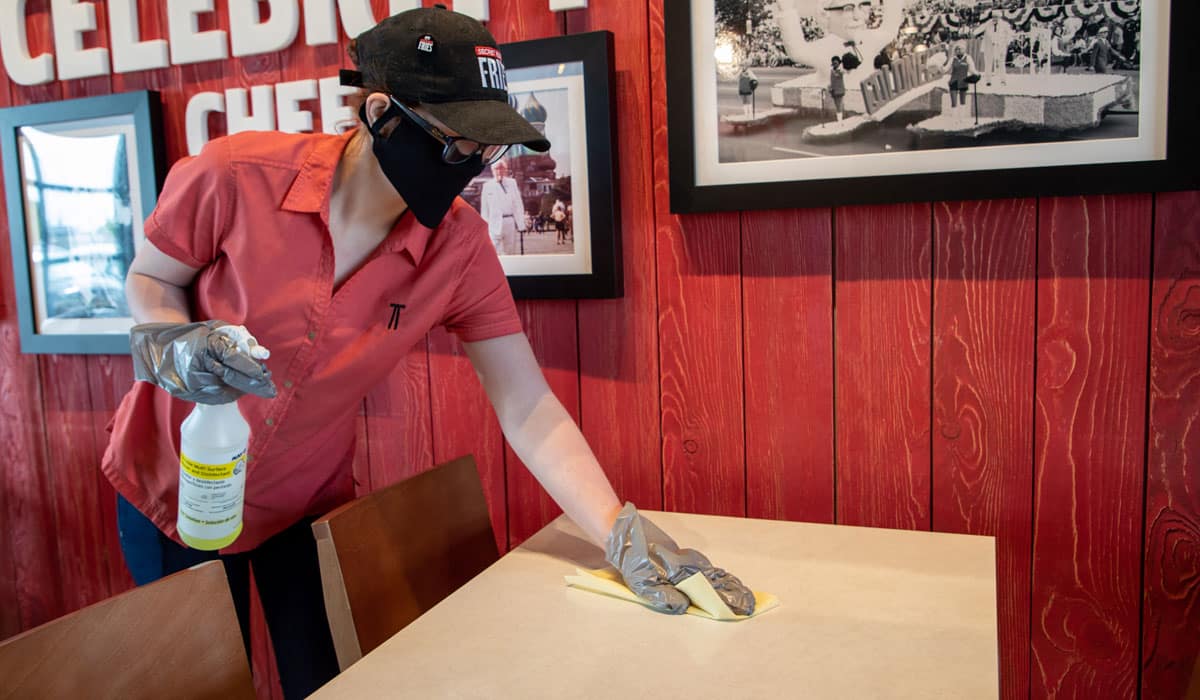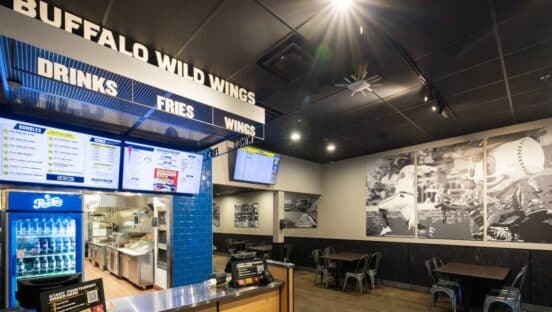Do customers truly judge a restaurant more by its tables than its menu? Restaurant owners may be surprised to hear how people perceive cleanliness when they go out to eat. Many factors contribute to the sanitary appearance of an establishment, which can have a monumental impact on business, reputation and even hiring. Even if you follow all standard sanitation guidelines, a poor perception can be detrimental and long-lasting.
Luckily, restaurant owners can take action to make sure they’re incorporating psychological cues in their restaurant and prioritizing cleanliness with every order.
What Affects Someone’s Perception of Restaurant Cleanliness?
It is a common assumption that the appearance of tables and chairs have the biggest impact on cleanliness perception. However, studies have found that customers take notice of some other details. Many people are becoming significantly more critical of certain features in dining facilities, especially in light of the COVID-19 pandemic.
Restrooms
A study published at Virginia Tech found that the top indicator of restaurant cleanliness is restrooms. It worked with a cross-cultural group of participants, indicating that the results likely apply across most, if not all, demographics. Things like the cleanliness of toilets, sinks, floors, trash cans and door handles can all affect one’s perception of a restaurant’s cleanliness. Even signage in and around restrooms was found to impact customer perceptions.
Servers
Interestingly, participants in the Virginia Tech study mentioned above showed great concern for the behavior and appearance of servers. Customers can make many judgments based on how someone handles their food, how they are dressed and their general behavior. For example, a customer may find it unsanitary if a server puts their hands in their pockets or touches their hair excessively. Contrastingly, actions like visibly cleaning their hands could improve their perception.
Restaurant Facilities
The cleanliness of a restaurant’s overall facilities is always important, but especially so if you have an open concept design where part of the kitchen is visible to diners. A kitchen that customers can easily see during their visit must be clean. People may not have to set foot in an unsanitary kitchen, but they will not want to eat food being produced in that environment.
If your restaurant has any part of the kitchen visible, it’s imperative that dirty dishes are tended to quickly and that guests can see staff sanitizing and cleaning prep surfaces after use. If your restaurant doesn’t have a visible kitchen, managers can still have wait staff walk around with sanitation buckets to wipe down tables and chairs after guests leave.
Psychological Cues for Cleanliness
So, what makes people perceive a restaurant as unclean, even those that are, in fact, perfectly sanitary? There are actually subtle psychological cues that have been connected to cleanliness complaints in the hospitality industry. These cues help to clarify why someone might subconsciously find a restaurant unclean, as well as some methods for improving perception along with reality.
Lighting
Interestingly, lighting can make a significant difference in a customer’s perception of restaurant cleanliness. A 2021 study identified both the degree of lighting and the shininess of surfaces as key aspects of subconscious cleanliness perception in hospitality.
When a space is poorly lit, customers are more likely to perceive it as unclean. This is because in a well-lit space debris, garbage, spills, and other messes are easily and clearly visible. A dark or dim space may subconsciously suggest that the restaurant is attempting to hide unclean surfaces or poor sanitation practices. Since customers cannot clearly see whether or not the space is clean, they can only imagine and all too often imagine it as unclean out of caution.
The same mentality applies to surface textures. The above-mentioned study found that customers perceived smooth, shiny surfaces as cleaner than dull surfaces. This is likely connected to the idea that something was just polished, so much so that it shines. A dull surface, on the other hand, may indicate a stain, smear, or other debris.
Color
Color theory has a monumental impact on hospitality. Different colors all have unique subtle psychological cues and triggers. Red, for example, is known for sparking aggression and excitement. Blue, on the other hand, is the most popular color in the world and is known for inspiring feelings of calm and thoughtfulness. In restaurants, white can be a key color for indicating cleanliness.
Customers are more likely to perceive a restaurant as clean when white surfaces are present, especially tables. Lighter-colored surfaces show stains, spills, and other unsanitary conditions easier than dark-colored surfaces. So, white paint or a light-colored wood for tabletops and counters may help subconsciously indicate good restaurant cleanliness to customers.
Smell
Ambient smells are among the most challenging cleanliness cues to pin down and control. In restaurants, ideally, customers only notice the satisfying smells of their food. However, the presence of intrusive smells may subconsciously leave customers feeling unhappy.
For example, if reusable napkins are being washed in scented detergent, some customers may find that smell off-putting when they use the napkin to wipe their mouth clean. Spills on fabric surfaces like seats can also leave lingering scents that customers may find unappealing.
Point of First Contact
Restaurant cleanliness perception is often determined before a customer even sits down or orders their food. Research has shown that a customer’s first point of contact at any business is often where the perception of cleanliness is established. For restaurants, this may be the host or greeter’s podium. Packaging can have a similar effect with takeout food.
Something as simple as a noticeably clean countertop or door handle can have a positive ripple effect on the overall restaurant cleanliness perception. Similarly, having something like wet wipes or a hand sanitizer dispenser available right near the door can often subtly indicate to customers that the restaurant management cares about individual hygiene and cleanliness.
How to Improve Perception
The consequences of a poor restaurant perception may seem daunting, but restaurant owners can turn things around or prevent these results altogether. A good first step may be to think about personal experiences. Everyone has been to an establishment at some point or another that they found unsanitary. What made it come off this way? What diminished the customer experience? Restaurant owners should remember to put themselves in their diners’ shoes every now and then.
Taking the time to read any negative reviews online may offer insight into what aspects of the restaurant customers perceive as unclean. Rather than responding in frustration, try to glean some constructive feedback.
In addition, incorporating cues that you care about cleanliness like having a hand sanitizer bottle by the hostess station and improving the lighting in your restaurant can also improve how diners perceive the cleanliness of the place.
Emily Newton is the Editor-in-Chief of Revolutionized Magazine. She has over five years experience writing for the food and beverage industry.












